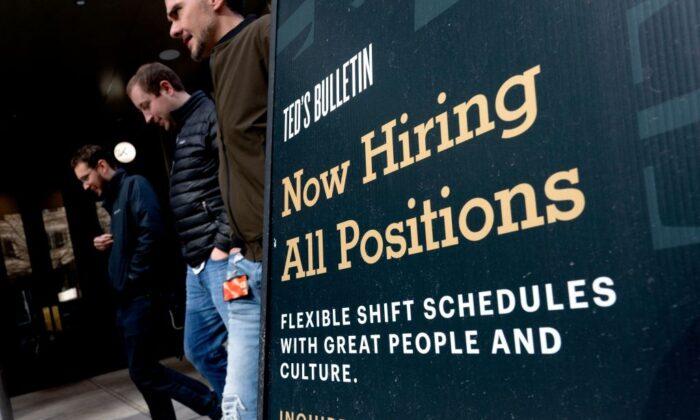America’s low labor participation rate since the COVID pandemic has become a problem for the U.S. economy, according to experts.
Economists are saying that an unprecedented drop in labor participation throughout the United States after the pandemic hit in 2020 has become widely noticeable.
Health concerns, harmful reactions to the COVID vaccines, lockdowns, and stimulus payments pushed tens of millions of Americans who were still in their prime working years out of their jobs.
Three years later, many of those who quit working have yet to return to work, something that has alarmed experts.
A jobs report from the Department of Labor showed that U.S. unemployment levels fell to 3.4 percent in January, the lowest level in more than 50 years.
Economists Worry About Low Labor Participation
Although some economists see the low unemployment rate as a good sign, others were not celebrating the latest figures and fear that there is an approaching social and economic crisis.Greszler said that particular groups such as parents and low-income workers were disproportionately affected at the beginning of the pandemic, but now it has spread to other demographics.
She cited recent data from the U.S. Bureau of Labor Statistics (BLS), that the virus was not the only reason why many older workers left the workforce.
7 Million Young Americans Have Dropped Out of the Workforce
Greszler also told Fox Business that people 20 to 24-year-old age bracket saw the greatest decline in employment and there has been a surge in young adults living in their parent’s homes.Meanwhile, able-bodied men in that age group, about 7 million of them, have left the workforce altogether.
“I do think with regard to that workforce participation rate, that to me is the most chilling metric of all. It’s more chilling than the latest report card because it’s an indication of what’s to come,” said Rowe.
“Seven million able-bodied men between the ages of 25 and 54 are not only not working. They are affirmatively not looking for work. They’ve punched out. They’re done. The vast majority of them spend over 2,000 hours a year on screens.”
“Today you have 11 million open jobs. You have 7 million able-bodied men sitting it out. So what’s really happening in the country now that scares me right to my core fundamentally is that we’ve never had so much unrealized opportunity and so little enthusiasm for it,” he explained.
However, Greszler noted that the labor participation rate has been declining for the past two decades, well before the pandemic, according to over 70 years of data from the BLS.
Participation in the workforce peaked around 2000.
She said that for men aged 20 to 24, employment has dropped 10.5 percent since the turn of the century.
She told Fox Business that extended government benefits over the last 20 years have encouraged young and fit workers to stay at home.
“I think about the future of my kids. I’m an economist, so I want them to have the full information and make an informed decision,” said Greszler.
Older Workers Return to Work Due to Inflation
On the other hand, workers between 55 and 64 have returned to work at the same rate as they were before the pandemic.This is a reversal of the trend of older workers deciding to retire early following the pandemic.
The study said that rising home prices were the main factor in the decline in workers 65 and older participating in the economy.
“The troubling part is, what does this mean for the future of the workforce?” she asked.
“When you talk about people who are kind of displaced from the education or worker experience routes that they otherwise would have gone into, and instead just kind of been idle at home—living with mom and dad or maybe in a group setting and just able to live off welfare benefits—they’re not getting the experience and the education they need,” Greszler told Fox Business.
“So I think it’s really troubling going forward that we could see this have a more longer-term impact,” she warned.





